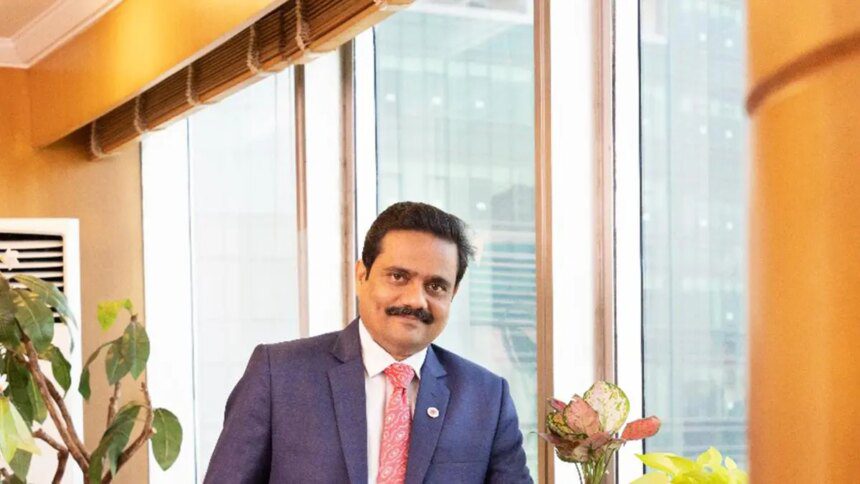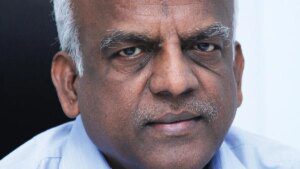The low retail debt-to-GDP ratio offers Bank of Baroda (BoB) an opportunity to grow its RAM (retail, agriculture, and MSME — micro, small and medium enterprises) portfolio further, says Debadatta Chand, MD and CEO.
India’s third largest public sector bank, with total business (deposits plus advances) of ₹27,78,859 crore, as at September-end 2025, plans to increase the share of RAM advances in its gross domestic credit to 65 per cent in three to four years, from the current 61.7 per cent.
In an interaction with businessline, Chand highlights the bank’s stable performance, clocking quarterly net profit of more than Rs ₹4,000 crore over the last 13-14 quarters, as a fair indicator of its core strength in generating income and profit.
The market gave a thumbs up to your second quarter performance despite the net profit dipping 8 per cent year-on-year to ₹4,809 crore. What is the reason for this?
It (the stock) will go up only when the market appreciates the numbers (performance). We had an NCLT (National Company Law Tribunal) recovery of almost ₹1,700 crore from a single account in the year-ago quarter. Adjusted for this, the net profit growth is up almost 22 per cent.
This quarter (Q2FY26) is a normalised one, with no one-off (extraordinary) income. Sequentially, the net profit is up 6 per cent. Possibly, the market is reacting to the positive sequential growth.
One of the key themes of our bank is to strengthen the core and be consistent. And we have been demonstrating a stable performance for the last many years. The quarterly net profit, I think, is a fair indicator of our bank’s core strength in terms of generating income and profit.
In May 2024, you had said you want to double BoB’s total business to ₹48 lakh crore in five years. Are you on track to achieving this?
The goal of doubling the total business is still there. But post that (statement), credit growth has outrun deposit growth. This is the case for all the banks. So, the doubling of our balance sheet may happen over a five- to six-year horizon.
So, how will banks bridge the gap between credit growth (11.45 per cent year-on-year, as on October 17, as per RBI data) and deposit growth (9.51 per cent)?
There are two important things. All banks have an excess SLR (statutory liquidity ratio). So, on new deposit mobilisation, we don’t have to impound it for any SLR. And there is a staggered 100 basis points CRR (cash reserve ratio) cut, which will also give us good money… We do have significant internal accrual. This is also supporting banks.
Further, our bank has a large borrowing plan, which is outside our deposits. Last year, we borrowed almost ₹25,000 crore via infra bonds. So, for our resource raising we tap markets where the cost is cheaper. That’s why you can see a slightly better NIM (net interest margin of 2.96 per cent in Q2FY26 vs 2.91 per cent in Q1FY26).
How much excess SLR (securities) are you holding? How much liquidity is the CRR cut unlocking for your bank?
Our excess holding of SLR securities is about 6.5 percentage points higher than the mandatory 18 per cent of deposits. (As at September-end 2025, BoB’s total SLR investments stood at ₹3,08,547 crore,) I think, we have almost ₹14,000 crore of cash coming back to us due to the CRR cut.
Given that your total deposits and global gross advances grew 9.3 per cent and 11.9 per cent, respectively, year-on-year, as at September-end 2025, have you revised your full-year growth guidance?
On a full-year basis, we continue to hold our earlier credit and deposit growth guidance of 11-13 per cent and 9-11 per cent, respectively. Possibly the market is reacting positively to the strong sequential growth (Q2FY26 over Q1FY26) in corporate credit (8.2 per cent), MSME (6.4 per cent), agriculture (4.9 per cent) and retail (4.5 per cent). So, going by the momentum we built in Q2 over Q1, I don’t think there is any challenge in terms of meeting the guidance and the consequent liquidity management.
Q3 and Q4 are productive quarters in terms of businesses. Normally, growth happens in these two quarters. Businesses and companies utilise the working capital to the full. There was a strong festival demand, backed by the GST rate cut.
Your RAM advances have grown to 61.7 per cent of gross domestic credit as at September-end 2025 (from 58.6 per cent as at September-end 2024), with a corresponding decline in corporate advances. Are you planning to increase the RAM portfolio further?
We announced that we want to retail-ise our loan book. And when we say retail, it is not only retail assets but also agri and MSMEs, because these are typically small-ticket loans going into productive segments of the economy big time.
So, the 300 basis points increase in the RAM proportion is a reflection of this. This is one segment where we want to improve further and take it to 65 per cent in three to four years, even as the corporate loan growth will continue.
India’s retail debt-to-GDP ratio is low. So, there are opportunities for this ratio to grow. BoB’s market share across deposits and overall advances is around 5.5-6 per cent. But our retail loan share is still at 4.3 per cent. And we’ve been growing the retail advances almost 18-20 per cent for the last many quarters… Our objective is to increase our market share on the retail front before we consider whether we need to moderate it.
What growth plans do you have for your foreign operations?
At one point of time (roughly around March 2021), our bank’s international book was at 11-12 per cent (of overall business: deposits plus advances), but its contribution to the overall profit was not very significant. So, we completely restructured the international business in terms of scale and profitability.
As of today, the international book has increased to almost 17 per cent and the profit contribution is also equally good. We intend to grow the international book to 20 per cent over three to five years.










